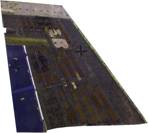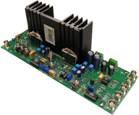The majority of vibration in mechanical systems can be attributed to the lack of significant natural modal damping. In structural members, such as aircraft components, the requirement to maximise fatigue life demands that the structure be strong enough to withstand environmental vibration during service. Strength requires weight, which raises costs, and generally decreases performance. By artificially damping a system using piezoelectric or electromagnetic actuators, vibration can be dramatically reduced. This project is investigating new methods for active structural and acoustic vibration control.
In precision machines, such as hard disk drives or milling machines, small amounts of vibration and long settling times reduce the accuracy and speed of the device. Damping augmentation can simultaneously improve both of these performance measures. In acoustic enclosures, such as air-conditioning ducts, fans and flow noise can excite resonance with detrimental effects on personal comfort. Acoustic speakers can be employed to reduce the pressure response of enclosures by adding damping to the lightly-damped modes. In contrast to feed-forward based noise cancellation, damping augmentation globally reduces the pressure response to any disturbance.



